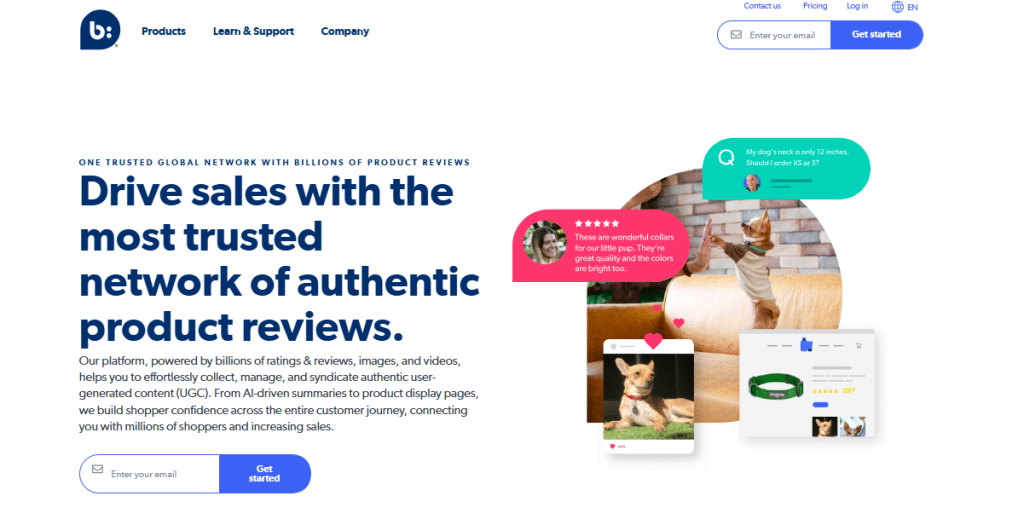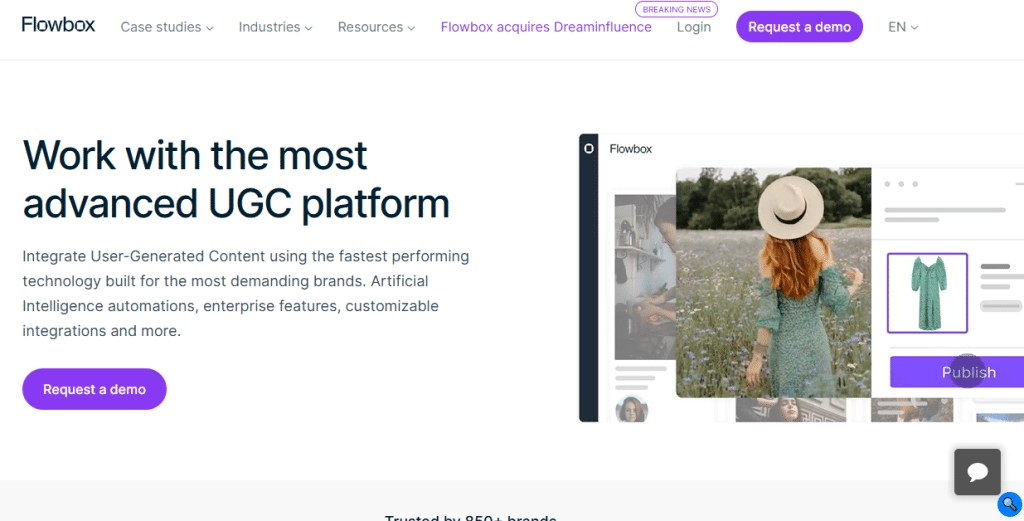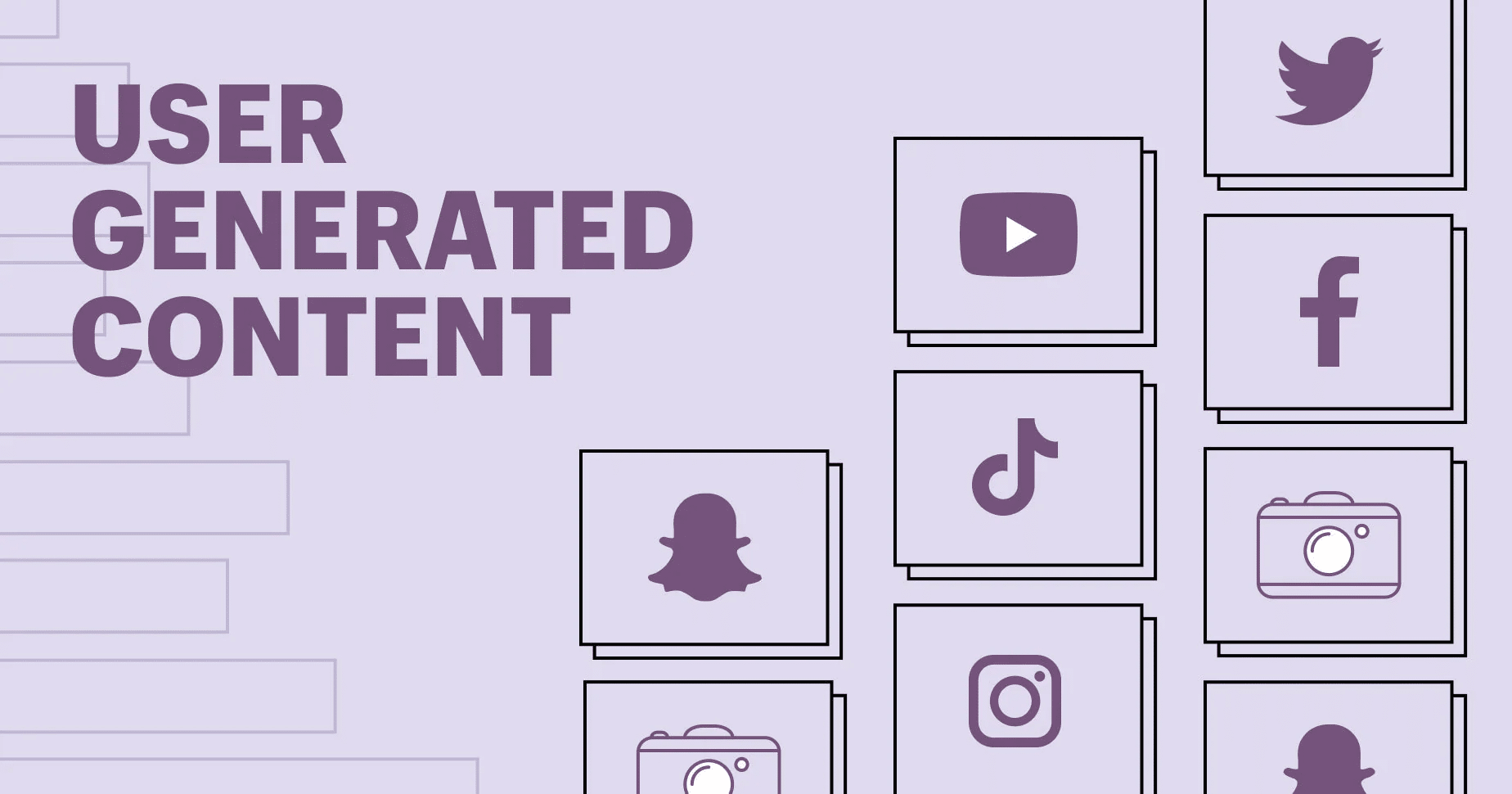User-Generated Content (UGC) has become one of the most potent growth levers for D2C brands. As consumers move away from traditional advertising and toward authentic, social-first experiences, brands that integrate UGC into their eCommerce funnel are seeing greater trust, stronger engagement, and higher conversions.
In this comprehensive guide, we explore what UGC for eCommerce is, why it matters, how to use it strategically, and the best tools that help brands scale UGC in 2025.
E-commerce statistics show that 92% of consumers turn to people they know for referrals about products or services they trust.
What is UGC for eCommerce?
UGC for eCommerce refers to photos, videos, reviews, and content created by real customers that brands use across their product pages, landing pages, ads, and marketing touchpoints.
This includes:
- Customer photos wearing or using a product
- Video testimonials or unboxing videos
- Social media posts featuring a brand
- Reviews, ratings, and Q&A
- Creator-style content from real customers
- Community posts or stories
UGC acts as social proof, giving shoppers the confidence that real people trust the brand—especially important for D2C businesses that rely on credibility in a translatable way, and ultimately drive sales through the power of real user experiences.

Reference: Loyoly
Benefits of Including UGC in Your E-commerce Marketing Strategy
1. Increased Conversions: Social Proof and Trust Signals
People trust their peers more than brands. Positive UGC, such as reviews and testimonials, serves as social proof, influencing purchase decisions. UGC videos can be impactful, allowing viewers to see products in action and connect with genuine customer experiences.
2. Enhanced Brand Image: Authenticity and Customer Connection
UGC humanizes your brand. It shows customers that real people use and enjoy your products. This authenticity builds a stronger connection with your audience, fostering brand loyalty and advocacy.
3. Valuable Customer Insights: Identifying Needs and Preferences
UGC provides valuable insights into customer sentiment and product interaction. Analyzing user-generated content, including reviews and comments, can help you identify areas for improvement and tailor your offerings to better meet customer needs.
4. Organic Content Creation & Reduced Marketing Costs
UGC is essentially free, user-generated content! You gain a constant stream of fresh, engaging content for your marketing efforts by leveraging customer creativity. This reduces dependence on expensive in-house content creation and allows you to focus resources elsewhere.
Why UGC Matters for eCommerce in 2025
1. Customers Trust Real People More Than Ads
Research consistently shows that shoppers trust real customer content more than brand-driven campaigns. UGC builds that trust instantly.
2. Higher Conversion Rates on Product Pages
Browsing is passive; UGC turns browsing into buying.
Shoppers feel more confident when they see how others use a product.
3. Creates a Community-Led Brand Identity
D2C brands thrive on community. UGC turns customers into advocates and ambassadors.
4. Scales Content Creation Without High Costs
Instead of spending heavily on photoshoots, UGC provides authentic, scalable content, often for free.
5. Improves Performance Across Marketing Channels
From paid ads to emails to landing pages, UGC boosts clicks, ROI, and engagement.
Why UGC Is Essential for D2C Brands
1. Customers Want Proof Before Buying
D2C shoppers can’t “touch and feel” products, so UGC fills the gap.
2. Helps New Brands Compete with Established Ones
UGC reduces the need for expensive branding at early stages.
3. Builds Trust in Modern Buying Behaviors
D2C brands win when they create emotional, relatable experiences.
4. Drives Higher ROAS for Ads
TikTok-style UGC ads outperform polished brand ads in 2025.

How to Collect UGC for eCommerce (Step-by-Step)
1. Encourage Customers to Post Content
Ask customers to share photos and tag your brand.
Use hashtags, packaging inserts, or post-purchase prompts.
2. Run Community or Hashtag Campaigns
Create simple prompts such as:
- “Share your look with #MyBrandStyle”
- “Show us your setup with #BrandSpaces”
3. Leverage Social Listening Tools
Platforms like Taggbox, Pixlee, TINT, and Flowbox help brands discover and curate UGC across social channels.
4. Incentivize Participation
Offer discounts, loyalty points, or giveaways.
5. Work With Micro-Creators
Micro-creators generate high-performing, genuine UGC suitable for ads and product pages.
6. Use Review Collection Tools
Platforms like Yotpo, Bazaarvoice, or Judge.me help automate reviews, ratings, and Q&A content.
Where to Use UGC on Your eCommerce Website
1. Home Page
Create instant credibility.
Show real customers wearing, using, or unboxing your product.
2. Product Pages
One of the highest-impact placements.
Shoppers want clarity on sizing, real-life visuals, and relatable use cases.
3. Category Pages
Helps customers quickly understand the lifestyle fit.
4. Dedicated UGC Galleries
Many brands use a standalone page, such as “Shop the Look” or “Customer Stories.”
5. Cart & Checkout Pages
UGC reduces final-stage drop-offs.
6. Blog & Landing Pages
UGC helps illustrate use cases, tutorials, and guides.
How D2C Brands Are Using UGC Across Channels
1. Email Marketing
Show customer photos in post-purchase or nurture emails.
2. Paid Ads
UGC-style ads look native and perform better on TikTok, Instagram, and Meta.
3. SMS Campaigns
Add a visual UGC campaign to improve click-through rates.
4. Retail or Offline Displays
Digital screens can show UGC in real time.
5. Community Building
UGC-powered communities turn customers into advocates.
Top UGC Tools for eCommerce in 2025 (Neutral Overview)
Below are widely used, neutral, non-promotional explanations.
1. Taggbox

A UGC management and social content platform that helps brands collect, curate, and embed UGC from social networks. Widely used for shoppable galleries, website widgets, and rights management workflows.
2. Yotpo

A review and rating platform that also includes visual UGC features. Popular among D2C brands for review collection, loyalty programs, and SMS marketing.
3. Bazaarvoice

Focuses on enterprise-level ratings, reviews, and syndication. Suitable for eCommerce companies managing product information across multiple retail channels.
4. Flowbox

A UGC platform used by many fashion and lifestyle brands. Known for its emphasis on shoppable UGC galleries and social content curation.
5. Pixlee

Offers social UGC collection, influencer content workflows, and shoppable galleries. Useful for large D2C brands that want a mix of influencer and customer content.
Rights Management and Legal Compliance in UGC
UGC is valuable, but only when used responsibly. D2C brands must ensure:
1. You Have Permission to Use UGC
Use rights-request tools or DM consent workflows.
2. UGC Is Not Altered Misleadingly
Avoid heavy edits that misrepresent the product.
3. Customer Data Is Protected
Store submissions securely and transparently.
4. FTC Guidelines Are Followed
Disclose incentives when content is rewarded or gifted.
5. Content Matches Brand Safety Standards
Avoid offensive, low-quality, or misleading visuals.
UGC Stats Every D2C Brand Should Know (2025)
- Consumers are 3x more likely to trust UGC over brand content.
- UGC on product pages can increase conversion rates by 20–30%.
- UGC-powered ads typically deliver CTRs 40–60% higher than polished creatives.
- 90% of shoppers say UGC influences their buying decisions.
- UGC can reduce return rates by up to 15%.
Examples of UGC in eCommerce (D2C-Friendly)
1. Fashion & Apparel
Shoppable lookbooks featuring customer outfits.
2. Beauty & Cosmetics
Before-and-after videos and skincare routine photos.
3. Home & Decor
UGC galleries showcasing room setups or decor ideas.
4. Fitness & Wellness
Workout videos, customer transformations, or product demos.
5. Electronics & Gadgets
Unboxing videos and real-life setup examples.
Best Practices for Using UGC in eCommerce
1. Make UGC Shoppable
Link directly to product pages. Helps convert inspiration into purchases.
2. Prioritize Authenticity Over Perfection
Customers prefer natural lighting and real environments.
3. Refresh UGC Often
Keep content fresh and seasonal.
4. Mix UGC Formats
Photos, videos, reviews, Q&A, stories — variety increases engagement.
5. Highlight Diversity
Show different body types, skin tones, lifestyles, and regions.
6. Reward Customers
Turn your community into your biggest asset.
Common Mistakes D2C Brands Make with UGC
- Using low-quality, unvetted content
- Ignoring rights and permissions
- Relying only on reviews and not on visual UGC
- Not optimizing for mobile audiences
- Leaving UGC unlinked or non-shoppable
- Lacking consistency across channels
- Overusing influencer content instead of real customer voices
The Future of UGC for eCommerce
UGC will continue shaping the D2C world through:
- AI-powered content moderation
- Intelligent UGC recommendations on product pages
- Automated rights management
- UGC-driven personalization
- Blended creator + customer content
- Social-first ecommerce
Brands that embrace community-led growth will remain competitive in 2025 and beyond.
Final Checklist for Using UGC in eCommerce
✔ Collect UGC from Instagram, TikTok, YouTube, reviews, and creators
✔ Curate content for diversity and authenticity
✔ Get rights and permissions
✔ Make UGC shoppable
✔ Place UGC across product pages, homepages, cart pages, and ads
✔ Refresh UGC monthly
✔ Analyze performance: CTR, conversions, engagement
✔ Use a reliable UGC tool for scaling
Conclusion
UGC for eCommerce is no longer optional—it’s an essential growth strategy for D2C brands. When used effectively, UGC builds trust, reduces friction, and increases conversions across the buying journey. Brands that prioritize authenticity, community, and customer voices are the ones winning in 2025.
If you’re a D2C business aiming to improve product discovery, boost conversions, or scale content efficiently, UGC is one of the most powerful tools you can invest in.





